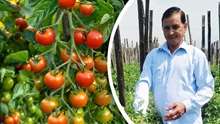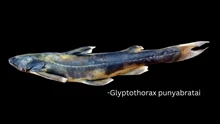
A horticulture, livestock, and apiculture-based integrated farming system built on the land of Valpoi-based farmer Vinod Barve on an experimental basis approximately a decade ago now gives him a net income of Rs 40.7 lakh per year.
With nothing to lose, the farmer agreed to let the Old Goa-based ICAR-CCARI expand the concept on his farm, which today grows fruit and spice crops, has indigenous cows, and bee boxes that provide milk, honey, and organic manure.
"The ICAR-CCARI conducted a series of seminars to educate farmers about this initiative." I decided to contact them about adopting the system after being inspired by the concept. The conversion of the farm into an integrated system was a gradual process. "I was able to carry it out successfully once everything was fully functional," Barve stated.
Barve, who is predominantly a banana farmer, was able to increase horticulture crop production after implementing this technique. With the Covid-19 outbreak affecting banana sales, he enlarged the concept to add a banana chips manufacturing plant.
"As a consequence, I was the first person in Goa to put up a banana processing machine." At the moment, the chips are solely processed in Kerala. "Selling the chips earned more cash than selling the fruit," Barve explained.
Because of the success of this processing machine, he has expanded his operations to include the production of jackfruit chips. While his wife handles manufacturing, Barve handles marketing, selling his products in Panaji and Margao.
Apiculture does not make a lot of money. However, as a result of apiculture, the farm's yield of cashew and coconut crops has doubled due to pollination. Although milk is the primary output of dairy production, cow excrement is a byproduct.
"This is utilised to make gobar gas, as a result of which the principal revenues in dairy farming come from the excrement rather than the milk," he explained.
Furthermore, the farmer does not throw away the arecanut crop's leaves. He utilises them to make eco-friendly and biodegradable food plates and bowls that he sells to caterers.
“Running a successful model like this however requires a lot of patience and dedication. It was a slow process since it takes four to five years for the crops to produce yield. The first half of the decade therefore was hard work while the results have been generated in the following five years,” he said.
"However, running a successful model like this takes a lot of patience and attention." It was a lengthy procedure because crops give yield after four to five years. "As a result, the first half of the decade was hard work, with the results coming in the next five years," he remarked.











